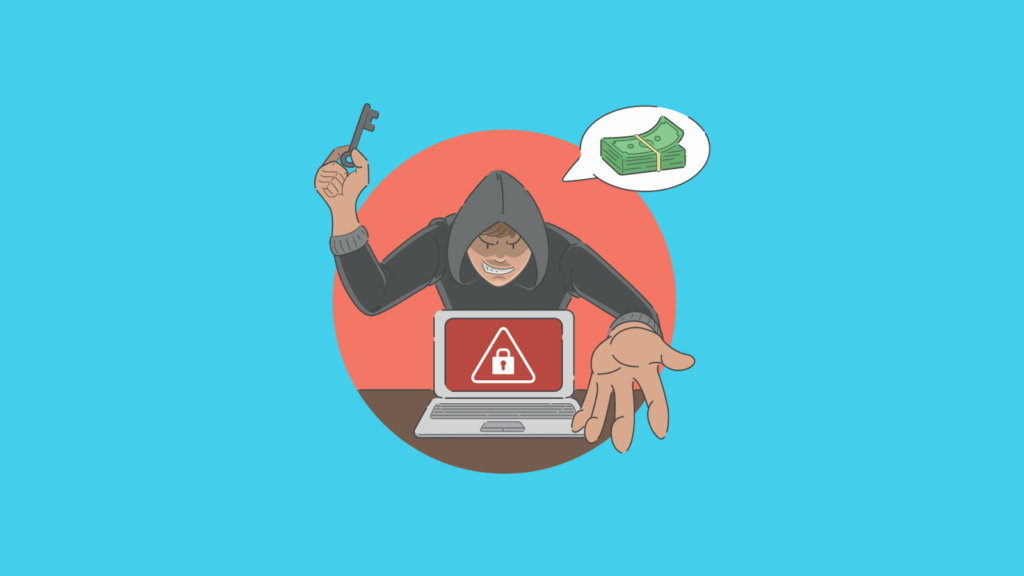Top Cybersecurity Threats in 2024: What You Need to Know
In the ever-evolving landscape of technology, every year brings with it a new set of challenges and risks in the realm of cybersecurity.
As our dependence on digital systems keeps increasing, cyber threats are also becoming more advanced. Both organizations and individuals must stay alert in safeguarding important data and ensuring the stability of their digital setup.
In this article, we will explore the top cybersecurity threats in 2024 and discuss what you need to know to safeguard your digital assets.
Chapters
- 1. Ransomware Evolution
- 2. Supply Chain Vulnerabilities: A Growing Concern
- 3. IoT (Internet of Things) Risks: Expanding Attack Surfaces
- 4. AI-Powered Attacks: Exploiting the Technology Itself
- 5. Zero-Day Exploits: Unpatched Vulnerabilities Under Attack
- 6. Social Engineering Attacks: Manipulating Human Psychology
- 7. Nation-State Cyber Threats: Escalating Geopolitical Concerns
- 8. Cloud Security Challenges: Managing the Shared Responsibility Model
- Wrapping Up
1. Ransomware Evolution

Ransomware attacks have been a common threat in recent years, and in 2024, they are expected to become even more sophisticated and targeted. Cybercriminals are employing advanced techniques such as artificial intelligence and machine learning to optimize their attacks.
These changing approaches pose a difficulty for conventional cybersecurity methods to detect and prevent ransomware effectively. Various professional IT organizations offer strategies for combating ransomware attacks and other threats and may help you with leveling up your managed IT services.
To defend against this threat, organizations should prioritize regular data backups, implement robust endpoint protection, and conduct employee training to recognize phishing attempts. Additionally, investing in advanced threat detection solutions that leverage AI and machine learning can help organizations stay ahead of the rapidly evolving ransomware landscape.
2. Supply Chain Vulnerabilities: A Growing Concern
In recent years, supply chain vulnerabilities have emerged as a critical focal point for cybersecurity professionals. The interconnectedness of global business ecosystems makes supply chains an attractive target for cybercriminals seeking to exploit weaknesses in one link to compromise the entire chain. In 2024, this threat is expected to escalate, posing significant risks to organizations and their partners.
Mitigating the Risks
To effectively address supply chain vulnerabilities, organizations must adopt a comprehensive and collaborative approach to cybersecurity. Here are some key strategies to mitigate the risks associated with supply chain attacks.
Comprehensive Cybersecurity Assessments
Conducting thorough cybersecurity assessments of all partners, vendors, and third-party entities within the supply chain is a fundamental step. This involves evaluating their cybersecurity policies, practices, and the effectiveness of their security measures. Regular audits and due diligence can help identify potential weaknesses before they can be exploited.
Multi-Factor Authentication (MFA)
Introducing multi-factor authentication throughout the supply chain enhances security by demanding users provide multiple forms of verification before accessing sensitive information. This straightforward yet impactful step can greatly decrease the chances of unauthorized access, even in cases where login credentials are compromised.
Encryption Protocols
Encrypting sensitive data during transit and storage is crucial for safeguarding information as it moves through the supply chain. End-to-end encryption guarantees that intercepted data stays unreadable and secure, maintaining its confidentiality. Organizations should establish and enforce encryption protocols to protect critical information from potential breaches.
Clear Security Protocols
Establishing clear and standardized security protocols for all entities within the supply chain is essential. This includes guidelines for data handling, access controls, and incident response. A well-defined and communicated set of security policies ensures that all participants are aligned in their commitment to maintaining a secure environment.
Continuous Monitoring and Incident Response
Implementing continuous monitoring solutions allows organizations to detect and respond to security incidents in real time. Taking a proactive stance allows for a quick response in case of a security breach, minimizing the potential impact on the supply chain. Having a robust incident response plan further ensures that organizations can effectively contain and remediate threats.
Collaborative Information Sharing
Establishing a culture of information sharing and collaboration among supply chain partners is crucial. Timely sharing of threat intelligence and cybersecurity best practices strengthens the collective defense against evolving cyber threats. Industry-specific information-sharing forums and partnerships can play a pivotal role in building a resilient supply chain ecosystem.
3. IoT (Internet of Things) Risks: Expanding Attack Surfaces

The proliferation of IoT devices continues to expand the attack surface for cybercriminals. In 2024, we can expect an increase in attacks targeting smart homes, connected healthcare devices, and industrial IoT systems. These devices often lack robust security measures, making them attractive targets for hackers seeking unauthorized access or launching large-scale distributed denial-of-service (DDoS) attacks.
To address IoT risks, individuals should change default passwords on their devices, update firmware regularly, and only purchase products from reputable manufacturers with a strong commitment to security. Organizations incorporating IoT devices should emphasize security during both development and implementation, conducting regular security audits and updates to safeguard against emerging threats.
4. AI-Powered Attacks: Exploiting the Technology Itself
While artificial intelligence offers many benefits in enhancing cybersecurity, it also poses a risk when in the wrong hands. In 2024, we can anticipate an increase in AI-powered attacks that exploit vulnerabilities in AI systems. These attacks may include adversarial machine learning, where attackers manipulate AI algorithms to produce incorrect or malicious results.
To defend against AI-powered attacks, organizations must implement robust security measures for their AI systems. This includes regularly updating algorithms, monitoring for unusual patterns of behavior, and investing in AI-driven cybersecurity solutions that can detect and mitigate AI-based threats.
5. Zero-Day Exploits: Unpatched Vulnerabilities Under Attack

Zero-day exploits, which target unpatched vulnerabilities in software, continue to be a significant threat in 2024. Swift to exploit newly found vulnerabilities, cybercriminals act before patches are released. Therefore, organizations must stay ahead when it comes to software updates and security patches.
To defend against zero-day exploits, organizations should implement a proactive patch management strategy. This includes regularly updating all software and systems, monitoring for vulnerability disclosures, and employing advanced threat intelligence solutions to identify potential zero-day vulnerabilities before they are exploited.
6. Social Engineering Attacks: Manipulating Human Psychology
Despite advancements in technology, social engineering attacks remain a prevalent and effective method for cybercriminals. In 2024, we can expect an increase in phishing attacks, vishing (voice phishing), and other social engineering tactics that exploit human psychology to gain unauthorized access to sensitive information.
To counter social engineering attacks, organizations should invest in comprehensive cybersecurity awareness training for employees. Regular simulated phishing exercises can help employees recognize and resist social engineering attempts. Additionally, implementing email filtering solutions and multi-factor authentication adds an extra layer of defense against these deceptive tactics.
7. Nation-State Cyber Threats: Escalating Geopolitical Concerns
The landscape of cybersecurity is not only shaped by individual hackers or criminal organizations but also by nation-states with cyber capabilities. Nation-state-sponsored cyber threats are expected to escalate in 2024, with countries using cyber tools for espionage, political influence, and economic disruption.
To protect against nation-state cyber threats, organizations must adopt a comprehensive cybersecurity strategy that includes robust perimeter defenses, threat intelligence sharing, and continuous monitoring for signs of advanced persistent threats (APTs). Collaboration between the public and private sectors is crucial to addressing the geopolitical challenges posed by nation-state cyber actors.
8. Cloud Security Challenges: Managing the Shared Responsibility Model

As organizations increasingly migrate to cloud environments, the shared responsibility model becomes a critical aspect of cybersecurity. In 2024, cloud security challenges will continue to evolve, requiring organizations to understand their responsibilities in securing cloud infrastructure and services.
To address cloud security challenges, organizations should implement strong access controls, encrypt sensitive data in transit and at rest, and regularly audit and monitor cloud configurations for potential vulnerabilities. Engaging with cloud service providers to understand the latest security features and best practices is crucial for maintaining a secure cloud environment.
Wrapping Up
In conclusion, the cybersecurity landscape in 2024 presents a diverse array of threats that demand a proactive and adaptive approach to defense. Remaining aware of emerging threats, adopting strong cybersecurity measures, and nurturing a culture of security awareness empowers individuals and organizations to enhance their protection against the evolving challenges of the digital age. Cybersecurity is a shared responsibility, and only through collective efforts can we create a resilient and secure digital ecosystem for the future.
Improve your Marketing with the Power of AI
See how you can start with AI Marketing and reach your goals faster than ever before. Check out the Tips, Strategies, AI Tools, Masterclass, Courses, and Community. Unleash the true potential of your brand with the help of AI.